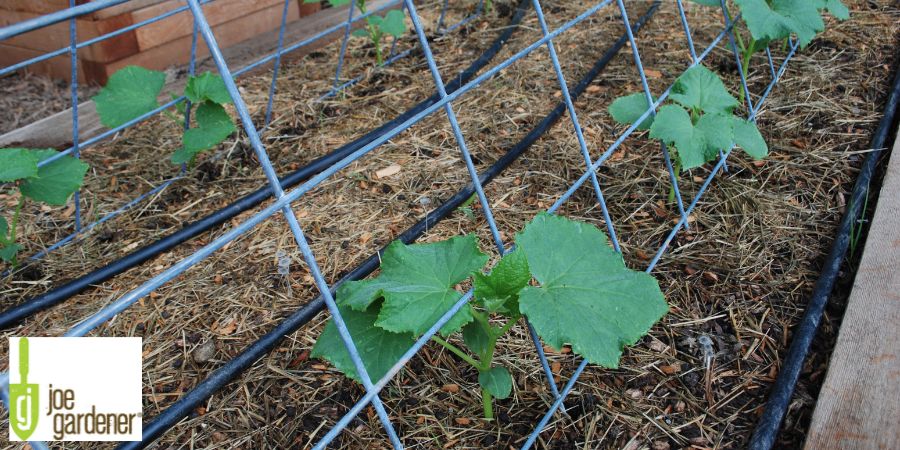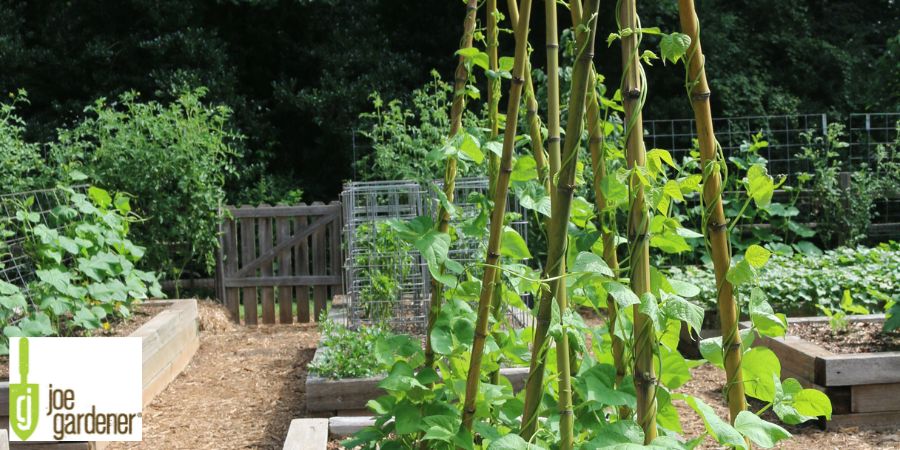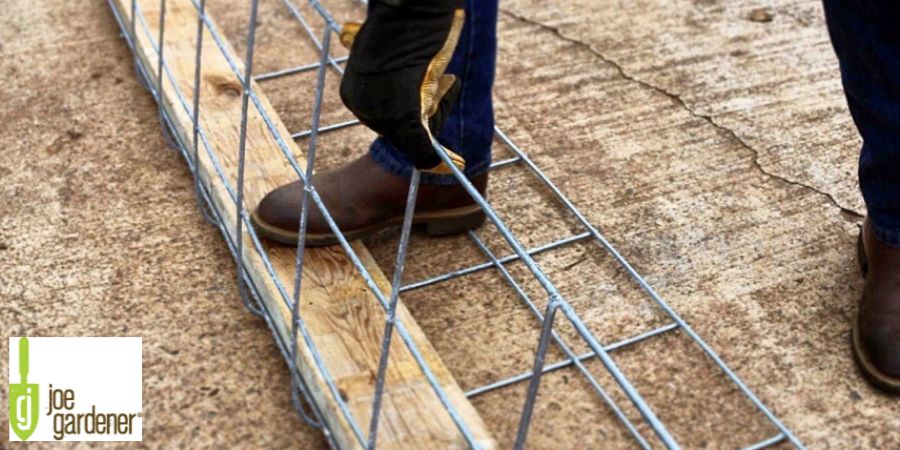The Best Options for Supporting Your Garden Plants
- Gardening Expert and Host of Growing a Greener World®May 20, 2023
A thriving vegetable garden means loads of heavy tomatoes, cucumbers, squash and more hanging from plants that can’t support the weight on their own. Tall and vining plants could use a hand to keep them off the ground and prevent them from breaking — and there are a number of options you can employ.
When tomatoes, for example, touch the ground, they are much more vulnerable to critters and soil-borne pathogens. So keeping tomatoes aloft prior to harvest time is essential to having a successful harvest, and the same is true for raising many other crops. Here, I’ll share my favorite ways to support plants so you can get the most out of your vegetable garden.
Livestock Panels to Support Plants

Livestock Panel with Vegetables
Livestock panels, also called cattle panels, are sections of sturdy galvanized metal fence that can be used in a number of ways to support plants. Each one is 16 feet long and just over 4 feet wide. Making a livestock panel trellis can be as easy as standing a panel up horizontally, supported on posts, to give beans, peas, and other vines something to grow up. Alternatively, two panels can be leaned against each other in an A shape, eliminating the need for posts.
Another method, which can be really aesthetically pleasing, is to bend the panel into an arch and grow cucumbers, melons, and squash up both sides. Do an image search for “squash tunnel" and you’ll see what I mean. You can also cut a livestock panel in half and make two small arches for low tunnels to give crops just enough lift to grow off the ground in a small space.
You can find livestock panels at farm supply centers. Vines will naturally latch onto the panels, but to guide the vines in the right direction so they don’t overlap with neighboring plants, you can use soft rubber garden plant ties.
Garden Teepees
A garden teepee is an inexpensive and effective way to support vining plants and use limited garden space more efficiently. These trellises may not be able to support the weight of a heavy crop like pumpkins, but for pole beans, runner beans, peas, and nasturtium, a garden teepee is just right.

Bamboo Stick Teepee in Garden
You can buy a teepee kit at a garden center rather cheaply and assemble it at home, but if you wish to save a few bucks, you can make one from scratch for next to nothing. Start with tall bamboo stakes or long branches cut to the length you need to support your crops at their mature height, and lash them together at the top with jute twine. Four or five poles will do, but for taller teepees, you can always use more. Plant three seeds or seedlings around each pole and the trellis will be covered in no time.
String Trellises for the Garden
Strings that are hung down from a horizontal length of lumber or wire and staked into the ground are perfect trellises for cucumbers and many indeterminate tomato varieties that produce small to medium fruit. A cucumber plant’s spiraling tendrils will grab onto a string and follow it to the top. Vining tomatoes can be “string trained” by wrapping the stem in the string about every foot or so to keep it growing upward. When attaching the strings to the horizontal support above, cut the strings long enough so there is enough slack to wrap the stem a few times as the plants continue to grow.
Build the Ultimate Tomato Cage
Regular tomato cages tend to be too short and too small around to support the big heirloom tomatoes I like to grow, and they only last a couple of seasons before they start to fall apart. That was my motivation for designing what I call the Ultimate Tomato Cage. It is made out of livestock panels, so it lasts forever and it has the strength to support the weightiest tomatoes while giving the plants ample space so they are not crowded.
Making the Ultimate Tomato Cage requires a few steps and a few cuts, and then you’ll be able to reuse it again and again.

Assembling a Tomato Cage
Start out by placing one full livestock panel on a flat surface. The panel is in a grid formation, with large rectangles on one half, and small rectangles on the other. From the side with the larger rectangles, count in the first six rectangles, then use large bolt cutters to remove the rectangles that remain on the other side.
Next, look at the panel horizontally. From the left side, count in by nine rectangles. Cut so you end up with eight full columns of rectangles across and so the end of the ninth column of rectangles is removed. That way, the remaining spikes will become the feet that sink into the garden and keep the cage standing. Then repeat this step starting from the right side of the panel, so you end up with two equal size sections.
Next, double the length of the spikes by removing the horizontal pieces on the first row up from the spike bottoms. Now place a piece of straight lumber along the length of a section and use it as leverage to bend the section into a right angle, and do the same with the compassion sections. When the spikes are sunk into the ground, and the sections are joined, you end with a cage that stands seven rectangles tall and three rectangles wide on each of its four sides. Secure the sections together with cable ties, and your Ultimate Tomato Cage is complete.

